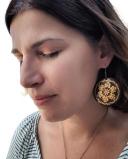Coronavirus Disease 2019
Transparency, the FDA, and the COVID-19 Vaccine
Concerned about the FDA's Emergency Use Authorization? Let's talk.
Posted December 11, 2020
Yesterday, the FDA Advisory Council on the coronavirus vaccines, which is led by my co-worker at the University of Michigan, Dr. Arnold Monto, an international expert on respiratory infections and how to prevent and slow their spread in the community, voted to recommend that the FDA approve the agent BNT162b2 for Emergency Use Authorization.
Specifically, 17 out of the 22 people on the committee said “Yes” to the question: “Based on the totality of scientific evidence available, do the benefits of the Pfizer-BioNTech COVID-19 Vaccine outweigh its risks for use in individuals 16 years of age and older?”
I, like thousands of people around the country, watched part of these proceedings on YouTube (nearly nine hours in total; it is archived here). There’s a nice written synopsis here if you don’t have nine hours to spare.
It was a history-making day for many reasons, particularly for the transparency of the process. Over 60 minutes of this marathon meeting was devoted to public comment, during which representatives of patient and advocacy groups were given 3 minutes to make remarks to inform the committee’s deliberations later that day. Public comment is always part of government policy-making: for example, right now you can comment on the National Institute of Health (NIH) Strategic Plan on COVID research.
And this leads me to the reason I’m writing this post. During the public comment period (which starts about three hours into the YouTube video), Vicki Pebsworth, a representative for the National Vaccine Information Center (which sounds like it should be a part of NIH, but which is actually a lobbying group that promotes “educated decision-making” around vaccines by promoting anti-vaccine propaganda), raised some striking questions during their three-minute public comment period.
Specifically, they said that: “The EUA fact sheet must clearly identify populations excluded from clinical trials. Over 40 criteria excluded certain people from some trials, including pregnant women and children, those with high blood pressure, obesity, diabetes asthma, heart, lung, and kidney disease… will the vaccine be safe and effective for them?”
Now, if this concern were founded on evidence, it would be a major issue, since 40 percent of Americans are obese. It would mean that the efficacy and safety of the vaccine is unknown for a large proportion of the U.S. population. Both my parents, the people I am most eager to see get the vaccine, would fall into that category.
Fortunately, this concern is unfounded. Let me show you how I figured that out.
Every clinical trial of an intervention, whether that is a new drug, a new application of an existing drug, a new form of psychotherapy or behavioral therapy, or to test if wearable tech helps you lose weight (it doesn’t), has to be registered on clinicaltrials.gov. This is to increase the transparency of clinical trials, particularly the “file drawer” problem, where agents or interventions that fail to achieve their clinical endpoints and are thus not pursued for market don’t make it into the scientific literature. You can read more about the drug development process here.
This is a problem because then future scientists don’t learn from these past failures: A well-conducted “failed” clinical trial has a tremendous amount of information. The search for medications to prevent and treat Alzheimer’s Disease is a cautionary tale of the importance of “failing fast” so that scientists can move on to start testing another hypothesis. We haven’t had a new dementia drug approved in almost 20 years, despite millions of dollars in government and industry investment. A story for another time.
Back to COVID. So I went to ClinicalTrials.gov and looked up the Pfizer vaccine clinical trial protocol, which will tell me not only what is in the vaccine, but also who was eligible to take part in the trial and who was not eligible (this is called the “inclusion criteria"). This is what would tell me if we know if the vaccine is safe for people like my parents.
A quick bit of terminology: the government has multiple “phases” of clinical trials, each with a distinct goal:
- Phase 1 Trials: The goal is to answer the question, “At how high a dose is this drug safe?” where “safety” is determined by giving a small group of participants (usually < 20) increasing doses of the drug to understand the type, frequency, and severity of adverse effects of the drug. How well the drug “works” is not the goal of Phase 1 trials: this phase is solely focused on safety.
- Phase 2 Trials: The goal is to confirm the safety of the dosage determined in Phase 1 as well as to begin to examine if the drug “works.” About 25% of drugs that make it to Phase 2 trials fail to make it to Phase 3.
- Phase 3 Trials: The goal is to answer the question “Does this drug work better than the existing ‘standard of care?’” For COVID, that means “Does this agent prevent infection with the coronavirus more than existing prevent strategies?” and this question was tested in a trial with over 40,000 participants including hundreds of older adults. To put this in perspective, most drugs that are used in the US today — including probably every medication you've ever taken — were only tested on a few hundred people in the Phase 3 trial, and include very few older adults.
Now, as is the standard practice of clinical trials, Pfizer’s Phase 1 Trial of the vaccine was limited to “healthy” participants, and people with BMI>30 (obese range) were indeed excluded from the Phase 1 trial. This is the riskiest part of the experimental process, where we know the least about the risk of side effects — what they might be, how severe they might be, and how often they might happen — and so we want the “blankest-slate” for testing the safety of the drug. By limiting Phase 1 to the healthiest volunteers, we can see what the side-effects are under the “best case” scenario of someone with no underlying health issues. If even in this best-case scenario, the drug has severe side-effects, the agent will not move on to Phase 2 or 3. This is the logic of drug development.
But when it comes to the study that really matters for approving the vaccine, the Phase 3 trial of 40,000+ participants which was discussed yesterday, there was no such restriction on participants. As you can read in the ClinicalTrials.gov documentation, the inclusion criteria clearly state in the protocol that the BMI exclusion only applied to the Phase 1 participants.
So why did Dr. Pebsworth lie about the studies that the Advisory Committee was evaluating in their public comments? (I could be more generous here and say why did she “misrepresent” the studies, but I think public shaming is an important part of any conversation with people who are trying to deliberately make people mistrust scientific evidence especially when it comes to vaccines, which have likely saved more lives than almost any medical intervention). I can only speculate, but I have a feeling that she introduced herself was careful to specify that she had no "financial" conflicts, and that qualifier was intentional.
COVID and the expediency that has characterized the development of the coronavirus vaccine have demonstrated that necessity truly is the mother of invention. And with these open meetings, the FDA has begun to actualize the tremendous opportunity this pandemic has presented to not only educate the public about the process by which medications are approved but also to improve efforts to monitor the impact of medications long-term.
Yes, there is uncertainty as we roll out the vaccine, but as we say in debate, “The status quo is a policy choice.” And right now the status quo means thousands of preventable deaths a day, thousands more hospitalizations, and wide-scale economic disenfranchisement.
I’ll take the jab.




